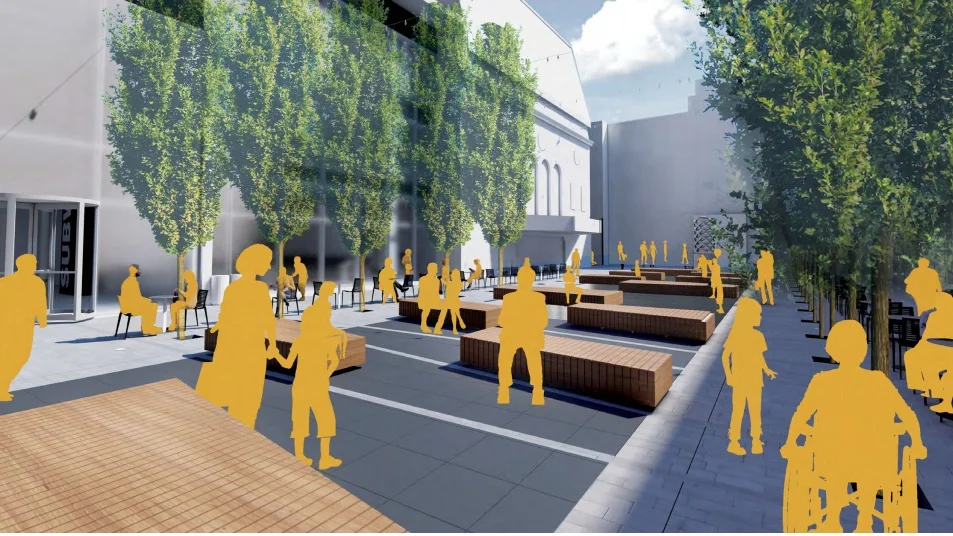A new pulse for the Heart of the City
After two years of construction, the east end of Peace Plaza has a new look — with Destination Medical Center leaders betting the project will be a catalyst for a downtown resurgence.
Here are five things to know about phase one of the Heart of the City project.
Peace Plaza was an early priority
With 3 million visitors converging on the area each year, upgrading Peace Plaza was top of mind when the first DMC development plan was released seven years ago. Peter Cavaluzzi, the New York-based architect brought on to lead the master plan, had come to the conclusion that upgrading the Heart of the City would have the potential to make the biggest impact early on. “The first phase of every large-scale project has to be large enough and bold enough to have an impact, but at the same time it has to be small enough that it can be achieved,” he said in 2015.
The project wasn’t cheap
The project came in at $19.4 million, above the initial estimate of $15 million. Much of the cost, about $15.4 million, went toward infrastructure; $1.6 million was spent on the design and engineering of the project; $2.4 million was put toward art. The price tag was covered almost entirely using state DMC funds. Key elements of the project included the remodeled plaza, an overhaul of the adjacent two blocks of First Avenue, and the replacement of underground infrastructure — stormwater, sewer, and other utilities — to support future growth.
First Avenue has been transformed
For Patrick Seeb, executive director of the DMC EDA, one of the most consequential components of the project was reconstructing First Avenue as a “people-oriented space,” rather than for cars only. “Many communities talk about making their city more pedestrian-oriented,” said Seeb. “This actually does it in a demonstrable way.” Along with the curbless street design, the abutting sidewalks have been enhanced with wooden benches tucked under rows of trees — providing downtown visitors and workers additional space for respite.
The redesigned First Avenue / Med City Beat
Public art is built in
To integrate public art into the project, DMC commissioned works from three artists, including two with international acclaim. The installations include a 26-foot-tall sculpture dubbed “Not So Private Sky” from Iñigo Manglano-Ovall ($520,000); “A Song for Water,” featuring a collection of pavers with words and phrases caved into them, produced by Ann Hamilton in collaboration with poet and Dakota historian Dr. Gwen Westerman ($735,000); and Rochester-based artist Eric Anderson’s “Wakefield” ($150,000) — more on that here. DMC also spent $51,000 repositioning the Peace Fountain next to the water scrim feature. A lights-focused installation proposed by artist Rafael Lozano-Hemmer was put on hold due to supply chain issues.
Business owners are optimistic
For Natalie Victoria, owner of Victoria’s Ristorante, this is the first spring in four years she has not had construction immediately outside of her business. Despite the pains of construction, however, Victoria — pointing to an expanded patio along First Avenue — said she is optimistic the project will lead to an upturn in activity in the area. “If you were to ask me maybe a year ago, two years ago, I would have said absolutely not. But this year, I am really optimistic.” Victoria, along with other business owners near the plaza, said they have already noticed an increase in foot traffic in the area since the project wrapped up last month. Still, in the absence of thousands of Mayo employees who continue to work remotely, Victoria noted that not all businesses have bounced back equally, and that it’s going to take new ideas to bring locals back to the city center after an extended period of Covid and construction. Seeb, the DMC director, agreed. “We need to work together to create a downtown that is a place that people want to come to, not where they are forced to by their employer,” he said.
Sean Baker is a Rochester journalist and the founder of Med City Beat.
Cover photo by William Forsman









